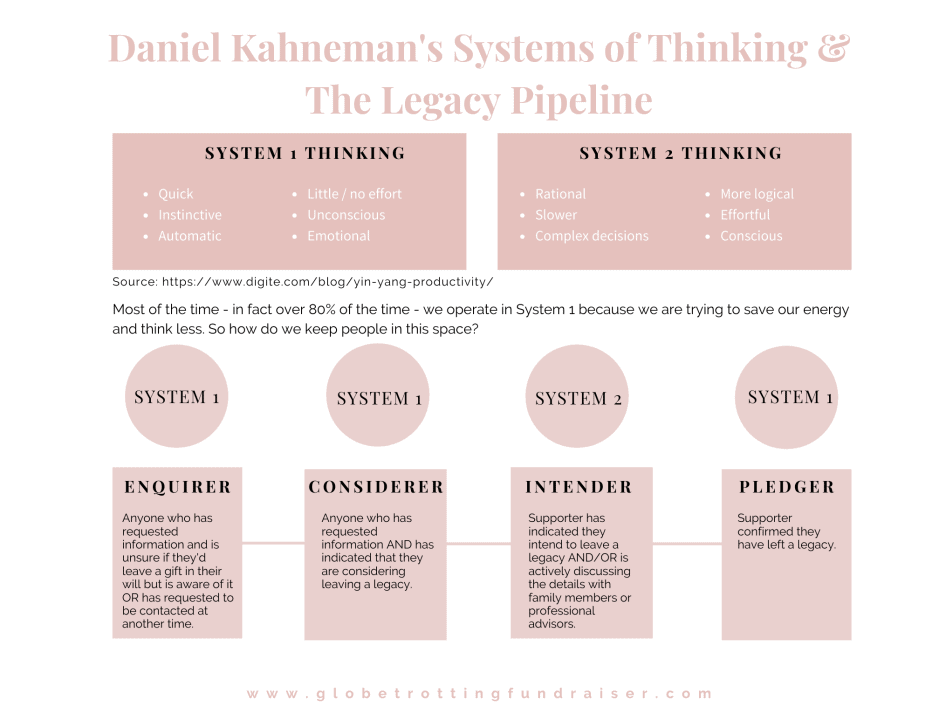Thanks to the wonderful work of Francesco Ambrogetti, Bernard Ross, Dana Kohava Segal, Omar Mahmoud, Marcelo Iñiarra and countless others, the charitable sector continues to learn more about the value and the importance of applying behavioural science to fundraising marketing.
The sector is seeing an increased awakening to this form of marketing – something the private sector has been using for decades. Simply read Alchemy: The Surprising Power of Ideas That Don’t Make Sense by Rory Sutherland, Vice Chairman of Ogilvy and Mathers, one of the largest and most renowned advertising agencies in the world.
Many of the examples we see used in the charitable sector are for regular giving, face-to-face, or emergency appeal. The results are always interesting and encouraging. In the legacy world, some organizations are starting to do some testing and it’s exciting to see the promising results they’re having.
After presenting on the applications of behavioural science on legacies for over a year now, I have come to realize there is one specific piece that still stomps a lot of people: when to switch the marketing and donor engagement from System 1 (emotional) to System 2 (rational) .
It’s common knowledge that to appeal to donors, we have to use emotions (see all the research from Dr. Jen Shang, Dr. Russell James, and many others). However, there’s a point in the legacy journey where we have to appeal to the donor’s rational brain.
To illustrate what that looks like, I developed this flowchart:
P.S.: Click on the image to download the file.
Let’s break this down a little.
At the Enquirer and Considerer stage, the donor is getting acquainted with the concept of gifts in wills. As a fundraiser, you need to appeal to the donor’s emotion by telling stories of what will be accomplished with their gift; how other gifts have impacted the organization; how trustworthy and reliable the charity is, etc. Basically, you want to use simpler terms to generate awareness, gain interest and build desire.
All engagement opportunities at these two steps need to be focused on making the donor feel safe, supported and good about the charity’s vision for the future. You want to minimize legal terminology (bequests, planned giving, etc.) because you want the donor to feel good about making this decision.
According to Dr. Russell James’ research, you can use more sophisticated words and phrases when donors are more likely to take action. This is the Intender stage. When all the donor needs to do is go to their legal advisor to write or update their will. You may want to offer sample will writing language, a list of legal advisors, etc. This stage is rational, calculated and technical – the donor has switched to System 2 so you have to adjust your approach.
After the donor has confirmed their pledge, you switch back to System 1 to celebrate and recognize their act by offering heartfelt and meaningful recognition and continued stewardship.
It really doesn’t need to be that much more complex than this. The key is listening and paying attention to how donors behave … they will guide the conversation, you simply need to nudge them along the way.



